Sony X85L is a model from 2023 that will continue to be available in the 2024 range from the Japanese manufacturer. Its biggest advantage is the Google TV system. It currently provides the greatest access to applications, so we don’t have to worry about missing any of our favourite apps. The intuitive interface and voice control feature using Google Assistant make daily use of the television convenient and modern. As for picture quality, Sony X85L performs well. Thanks to local dimming (albeit with a very mediocre number of zones), black levels look quite decent. Additionally, its fairly high brightness allows for comfortable TV viewing during the day, even in well-lit rooms. Moreover, the television offers a program recording feature from built-in tuners, which is a great convenience for those wanting to control what and when they watch. In terms of motion smoothness, X85L also does not disappoint. The 120 Hz panel and Motionflow system provide smooth display of dynamic scenes, which will satisfy both movie lovers and sports fans. The television is also equipped with a range of features for gamers, including VRR, Game Bar, and G-Sync support, making it an attractive choice for gaming enthusiasts. Of course, the television is not without its flaws. The lack of HGiG support and high input lag in Dolby Vision mode may be disappointing for more demanding gamers. Additionally, the compromise between font readability and smoothness of the image when connected to a PC may not appeal to everyone. Nevertheless, Sony X85L is a decent piece of equipment that is particularly worth considering if it can be purchased on sale.
- Matching (Score)
- Our verdict
- TV appearance
- Where to buy
- Contrast and black detail
- HDR effect quality
- Factory color reproduction
- Color reproduction after calibration
- Smoothness of tonal transitions
- Image scaling and smoothness of tonal transitions
- Blur and motion smoothness
- Console compatibility and gaming features
- Input lag
- Compatibility with PC
- Viewing angles
- TV efficiency during daytime
- Details about the matrix
- TV features
- Apps
- Playing files from USB
- Sound
Sony X85L vs Hisense U7Q
Direct compare
X85L
U7Q / U78Q

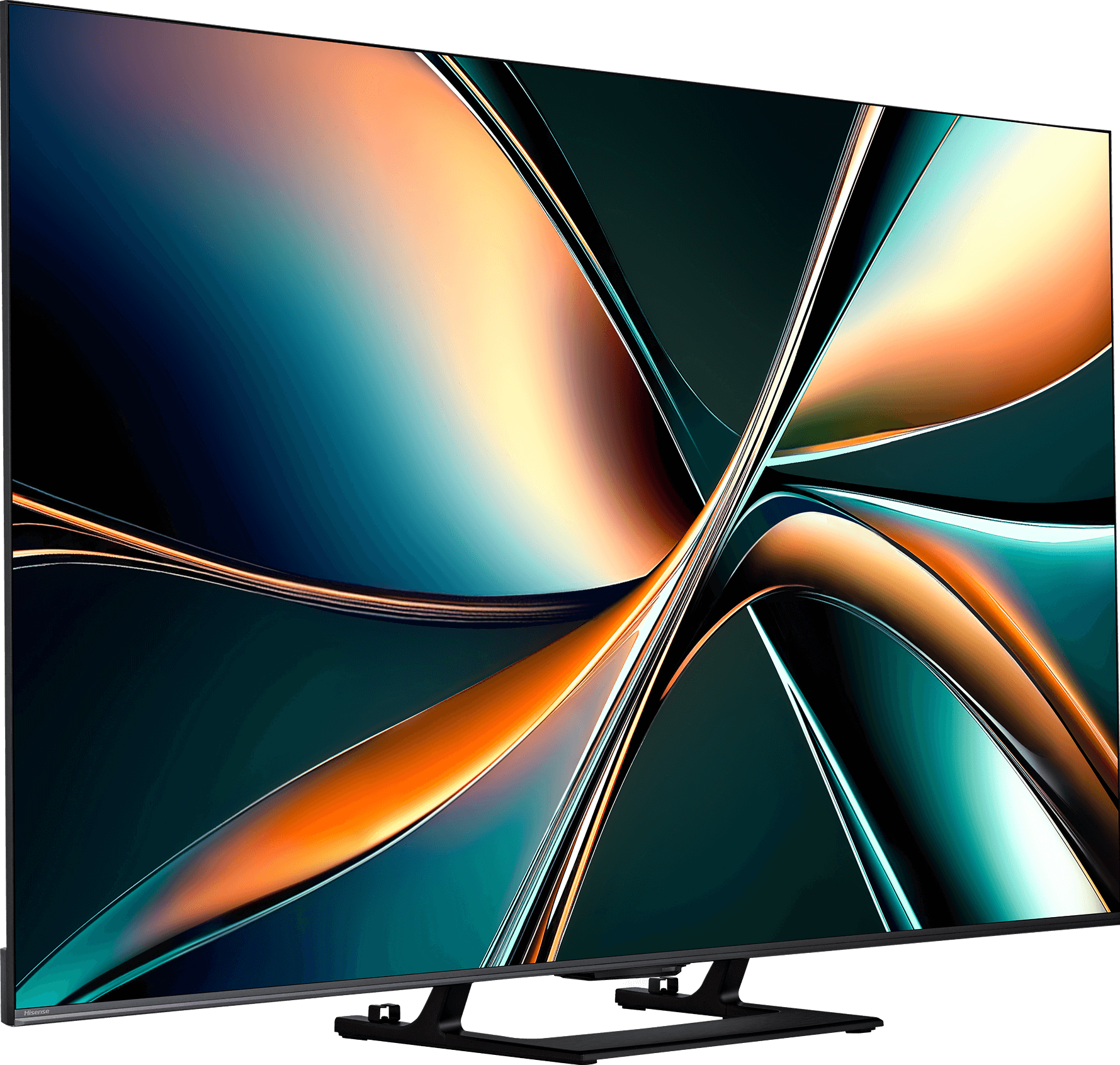
Resolution: 3840x2160
System: Google TV
Model year: 2023
Complete the survey to find out the result

Panel type: LCD VA
Resolution: 3840x2160
System: VIDAA
Model year: 2025
Complete the survey to find out the result

Overall rating
7.0
7.2
Movies and series in UHD quality
6.4
6.7
Classic TV, YouTube
6.3
6.8
Sports broadcasts (TV and apps)
6.6
6.5
Gaming on console
7.8
8.0
TV as a computer monitor
5.6
8.6
Watching in bright light
6.5
6.2
Utility functions
8.3
8.9
Apps
9.6
7.7
Sound quality
6.9
7.2
Complete the survey to find out what fits your preferences
Advantages
Expanded Google TV System
Decent contrast
Good brightness
Gaming features - VRR, Game Bar and G-Sync
Base with adjustable legs
Great contrast and deep black
Very good fluidity of tonal transitions (close to reference level)
High brightness
Supports 4K 144 Hz and even 240 Hz in Full HD
VRR, ALLM, G-SYNC – a full package for gamers
Low input lag
Pleasant sound with light bass
Many classic TV features built into the VIDAA system
Disadvantages
No support for HGiG, Dolby Vision with high input lag
Font readability issues on PC at 120 Hz
Only 2 HDMI 2.1 ports - one of which serves as eARC
No support for HGiG (makes setting HDR on consoles difficult)
Brightness management issues
Poor viewing angles – typical for VA panels
Closed VIDAA system – missing some apps
Our verdict
Hisense U7Q is one of the most interesting Mini-LED TVs in its price segment, clearly demonstrating that Hisense is starting to make a mark in the market not only through the price-to-performance ratio but also through increasingly refined picture quality. Let's start with what truly impresses: the contrast and black levels are at a level that was recently unattainable in this price range. Combined with smooth tonal transitions, solid brightness, and a fast 144Hz panel, the U7Q becomes a TV that excels in both movies and gaming. Gamers will find almost everything they can expect here – support for variable refresh rate (VRR), automatic game mode (ALLM), very low input lag, and even 240Hz in Full HD. All of this makes the U7Q suitable for both next-gen consoles and PCs. However, there are some downsides. When it comes to HDR content, one might want to say: “untapped potential” – you may ask why? The TV, due to its algorithms, dims small bright elements or excessively boosts them, which can spoil the viewing experience. There is also a lack of support for HGiG, the feature that would better match the console with the TV regarding HDR. In summary, briefly – the Hisense U7Q is a very versatile and complete TV that has its imperfections but makes up for them in many key aspects. For gamers, occasional movie watchers, or anyone looking for good equipment for everyday use – it’s one of the most cost-effective options in 2025. You just need to know what compromises you’re willing to make – and then it’s hard to be disappointed.
TV appearance





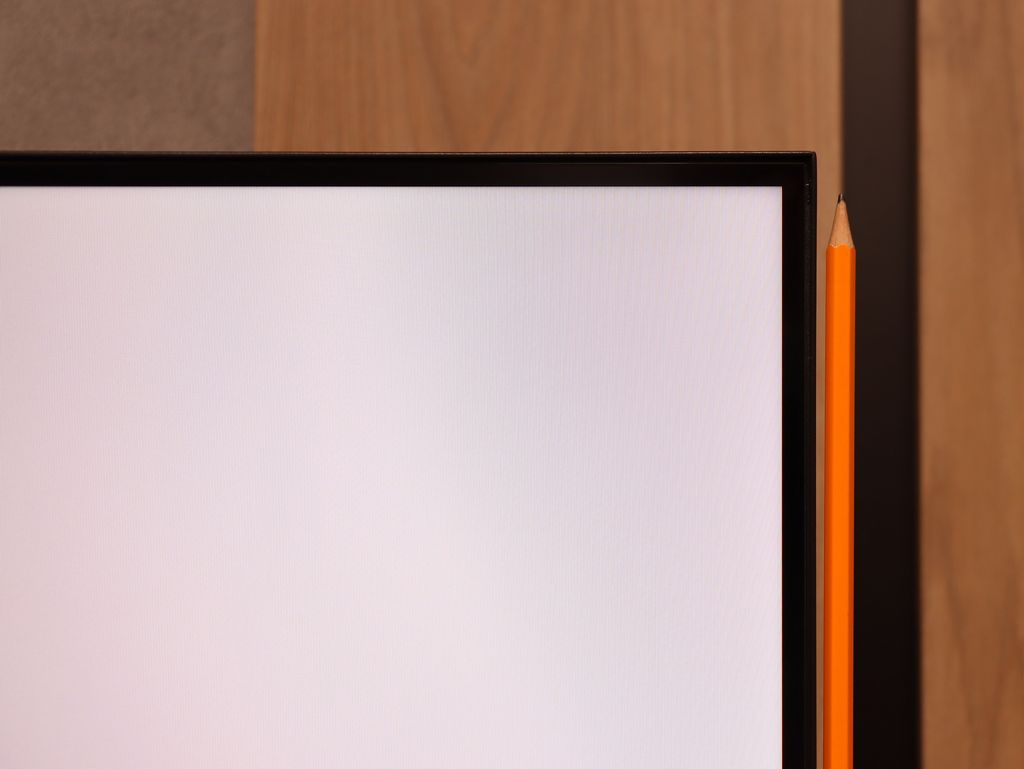
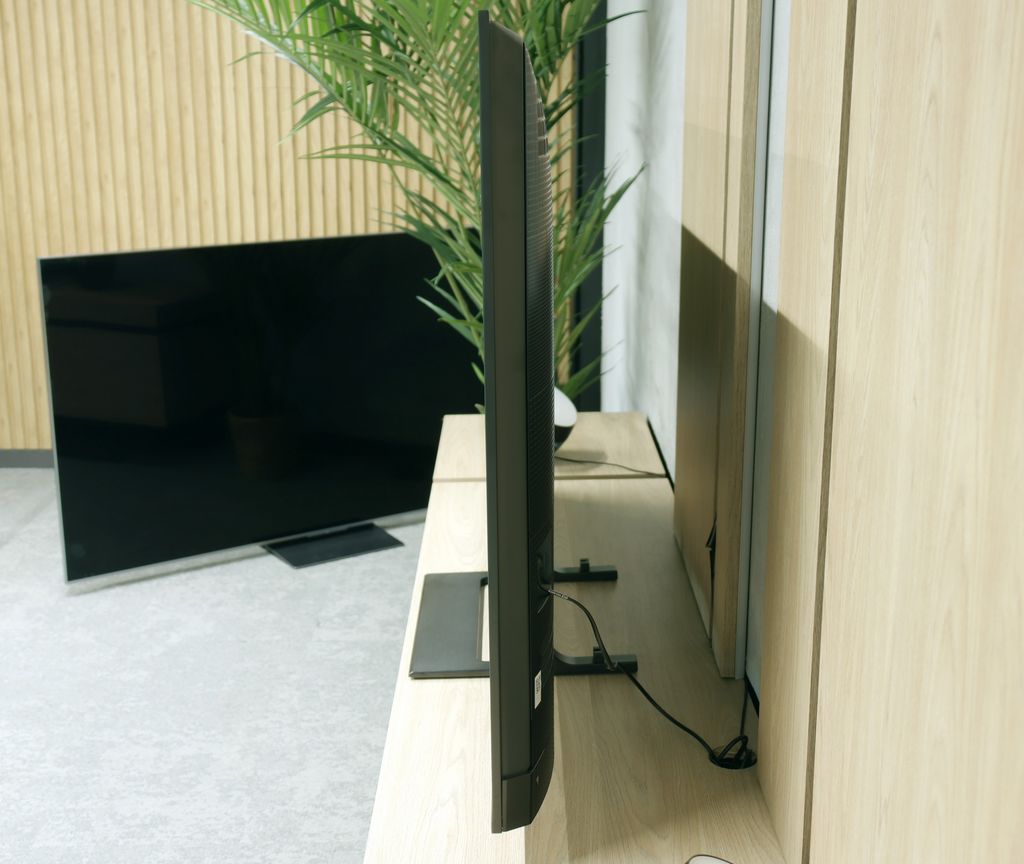
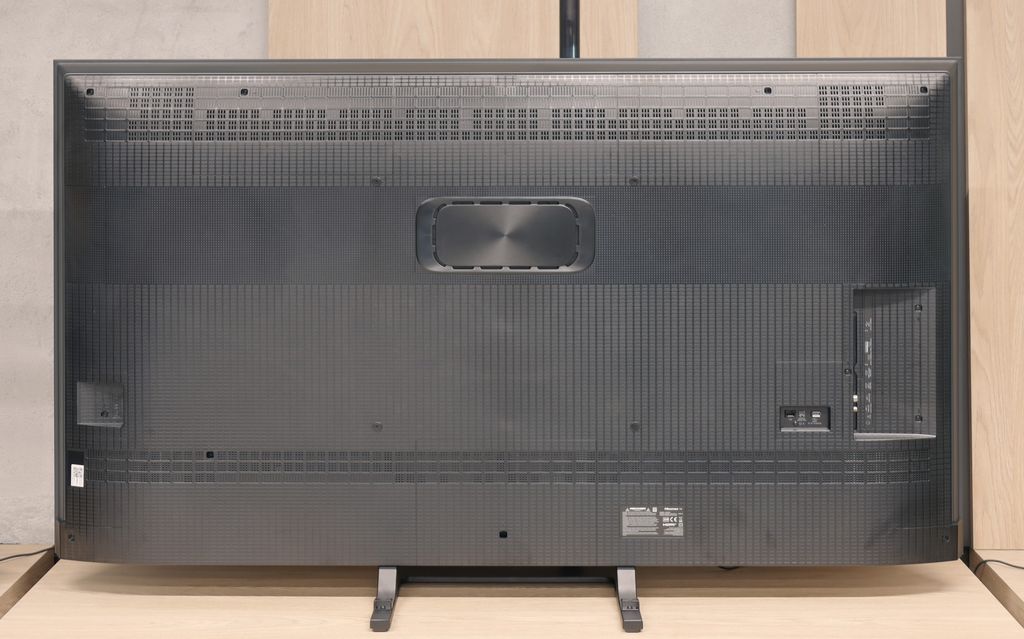
Contrast and black detail
6.7/10
7.5/10
Local dimming function: Yes, number of zones: 24 (4 x 6)
Local dimming function: Yes, number of zones: 220 (10 x 22)
Contrast:

Result
8,700:1

Result
7,800:1

Result
19,200:1

Result
5,750:1

Result
5,150:1

Result
278,000:1

Result
28,800:1

Result
11,100:1

Result
10,800:1

Result
6,250:1
Halo effect and black detail visibility:


The Sony X85L television is equipped with a VA panel, which offers quite decent contrast on its own. Additionally, this model features local dimming technology – in the 55-inch version, it includes 24 zones. Although this number isn’t impressive, it naturally increases with the size of the television. The contrast in the X85L is good, though not the best, especially compared to other televisions also equipped with advanced local dimming technology. Results at a level of 8000:1 are satisfactory, but they average out against the competition. In some cases, such as the third scene from the movie Arrival, the contrast is promising and performs quite well. This is thanks to the very good dimming algorithm that Sony has been using in its televisions for years. Unfortunately, due to the limited number of local dimming zones, the television struggles with noticeable blooming, which can be seen in scenes with the helicopter from the movie Sicario 2.
U7Q is a Mini-LED backlit TV – just like the PRO version. What’s the difference? The version without the suffix simply has fewer dimming zones. In our 65-inch model with a VA panel, we counted 220 of them. And while that doesn’t impress as much as in the U7Q PRO, it still looks very good on paper for this price range. Alright, but how does it perform in practice? Surprisingly well. The contrast in the U7Q can reach up to 300,000:1, which provides a really solid black effect. In many scenes, it’s hard to find fault – the image has depth, and the highlights are well separated. Of course, Mini-LED is not OLED – so there are some limitations. In very challenging scenes with many dark details, the TV sometimes either ‘eats’ them, leaving a nice black, or slightly brightens the background, which can create a halo effect. That’s normal in this technology and should be taken into account. Despite these minor drawbacks – the contrast in the U7Q is really good.
HDR effect quality
5.8/10
4.6/10
Luminance measurements in HDR:

Result
736 nit

Result
415 nit

Result
535 nit

Result
249 nit

Result
599 nit

Result
521 nit

Result
160 nit

Result
351 nit

Result
98 nit

Result
674 nit
Scene from the movie “Pan” (about 2800 nits)


Scene from the movie “Billy Lynn” (about 1100 nits)


Static HDR10


Dynamic: Dolby Vision
Dynamic: Dolby Vision


HDR luminance chart:
Hisense U7Q
Luminancja HDR
Luminance of RGB colors
Sony X85L
Luminancja HDR
Luminance of RGB colors
The Sony X85L TV offers solid HDR performance with a brightness of 750 nits, which is sufficient to enjoy vibrant effects. In scenes of moderate difficulty, such as the first, third, or fifth test scenes, a brightness of around 600 nits allows you to fully experience the HDR effect. Unfortunately, in more demanding segments, like the scene from the film Sicario 2, the TV reveals its limitations. Drops in brightness to 250 nits make the HDR effect lose its impressive quality and resemble ordinary SDR. Nonetheless, it is worth highlighting the very good coverage of the DCI-P3 colour palette at 95%, which definitely deserves praise and positively impacts the overall image quality.
Since the algorithms responsible for blacks are performing quite well, we expected a similarly good outcome when it comes to brightness and overall HDR quality. Unfortunately, we have to disappoint you a bit here.
The U7Q is quite a bright television – under the best conditions, it can reach around 800 nits, which indeed impresses in some scenes, especially in scenes like those from the movie The Meg. Bright segments can shine, and the HDR effect is noticeable. The problem arises when very small, bright elements appear on a dark background – for example, in Sicario 2 or in the second scene from Life of Pi. At such moments, the dimming algorithms operate too aggressively. Yes, the blacks look great at that point, but the brightest spots can almost completely disappear, causing the HDR effect to vanish and details to be barely visible. That’s just the charm of this technology in this price segment.
As a consolation, it is worth mentioning that the U7Q is marketed as a QLED (in practice, a PFS layer is used, which operates very similarly), and it can indeed display a wide colour gamut – a DCI-P3 coverage of around 94% is a very good result for this class.
Factory color reproduction
5.8/10
6.3/10


Factory Mode
After calibration
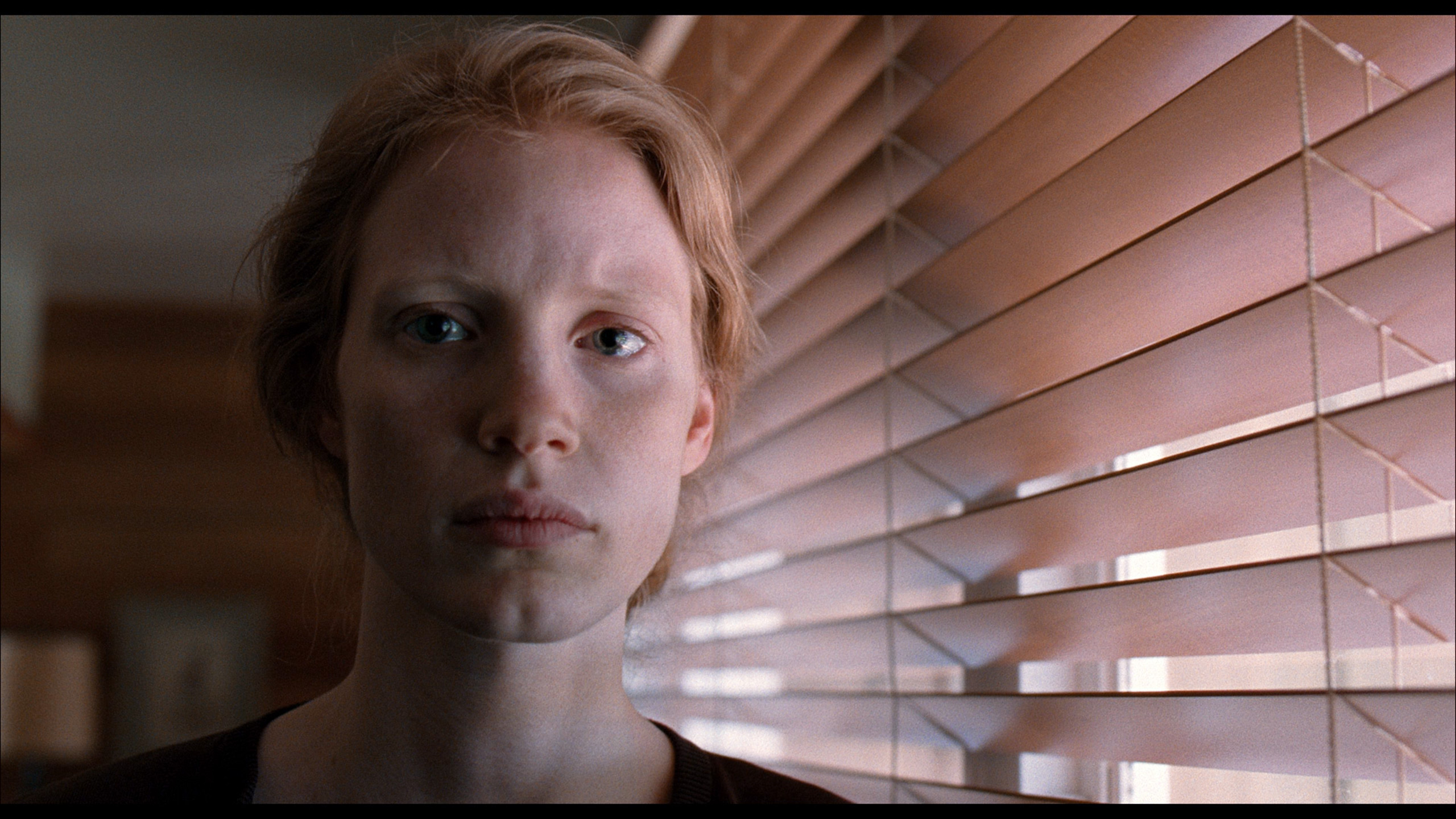
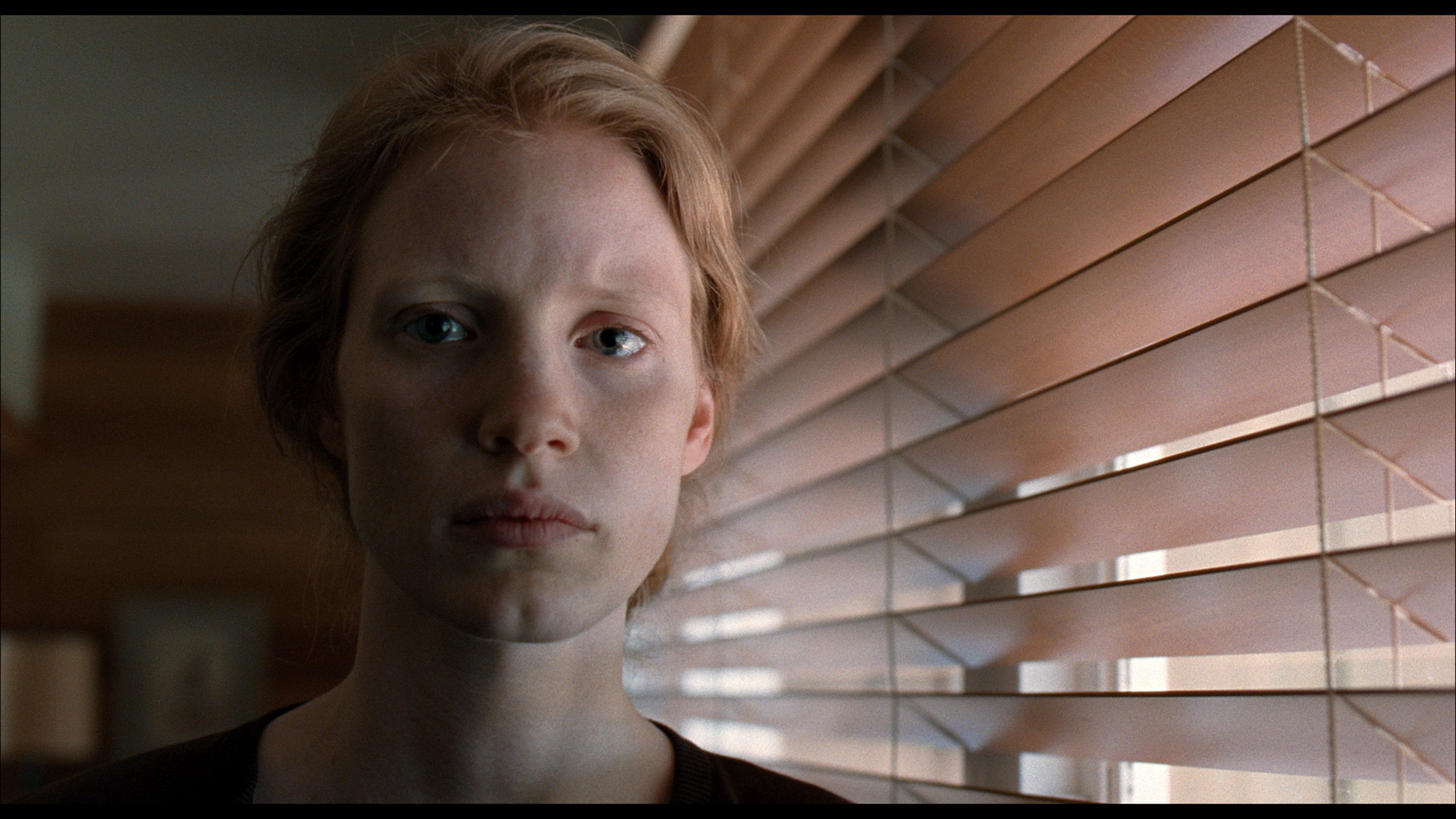
Factory Mode
After calibration
The television Sony X85L has been tested in IMAX Enhanced mode, which, while associated with world-class cinema, does not guarantee an image consistent with the director's intent. The main issue is the white balance – there is a noticeable strong dominance of blue and significant deficiencies in red. As a result, the image becomes unnaturally cool and looks artificial. Errors in colour reproduction were confirmed by the Colour Checker test, which showed significant discrepancies – colours were "scattered" like shots from a rifle, and only a few samples hit the target values. This clearly shows that the precision of colour reproduction leaves much to be desired.
The brightness of the image is one of the positive features of the television. The gamma for HD content is at an acceptable level, although minor errors occur, but generally it is quite good. However, the issue remains the brightness characteristic for 4K materials, controlled by the EOTF curve. It is evident here that very small, bright elements of the image are too dim, which is the result of the limited number of backlight zones due to the design of the television.
We tested the U7Q in the best possible picture mode, which is Filmmaker Mode. This mode is supposed to provide the most "cinematic" experience that aligns with the creators' intentions – straight out of the box. Unfortunately… even this professionally sounding name doesn’t guarantee a perfect image.
In our unit, the problem lay in the poorly set white balance. In both HD and 4K content, the image had too much blue and red, resulting in a slightly pinkish hue on the screen. It didn’t look terrible, but it was noticeable – especially in bright scenes and on white backgrounds. That alone could have been forgiven, but the biggest issue is managing brightness in HDR content. The EOTF curve from the measurements confirms what we saw earlier during scene tests: the television can overly dim the smallest bright elements, causing them to nearly disappear, or conversely – excessively brighten the brightest parts, which affects the naturalness of the image.
Color reproduction after calibration
7.5/10
7.4/10

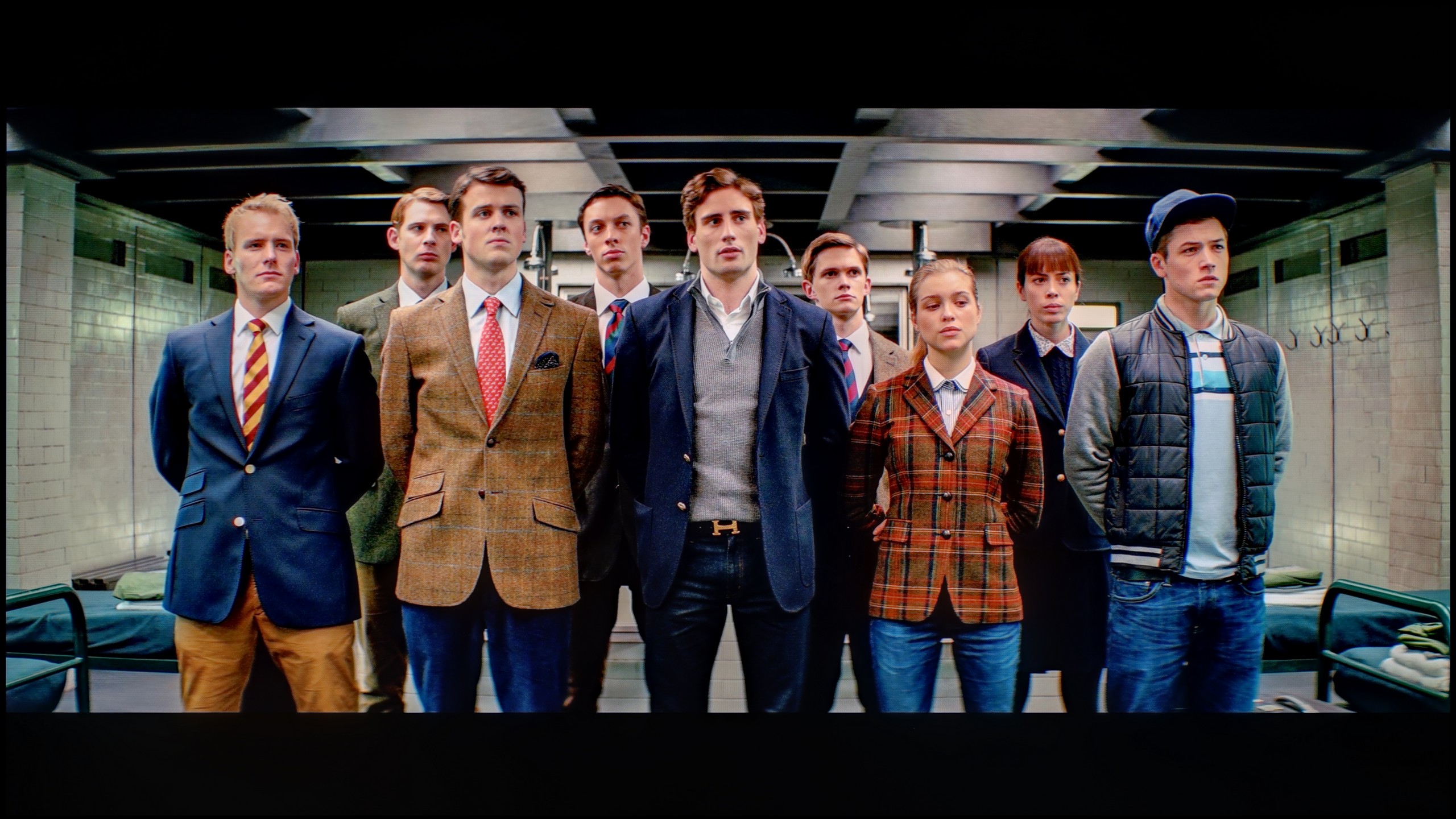

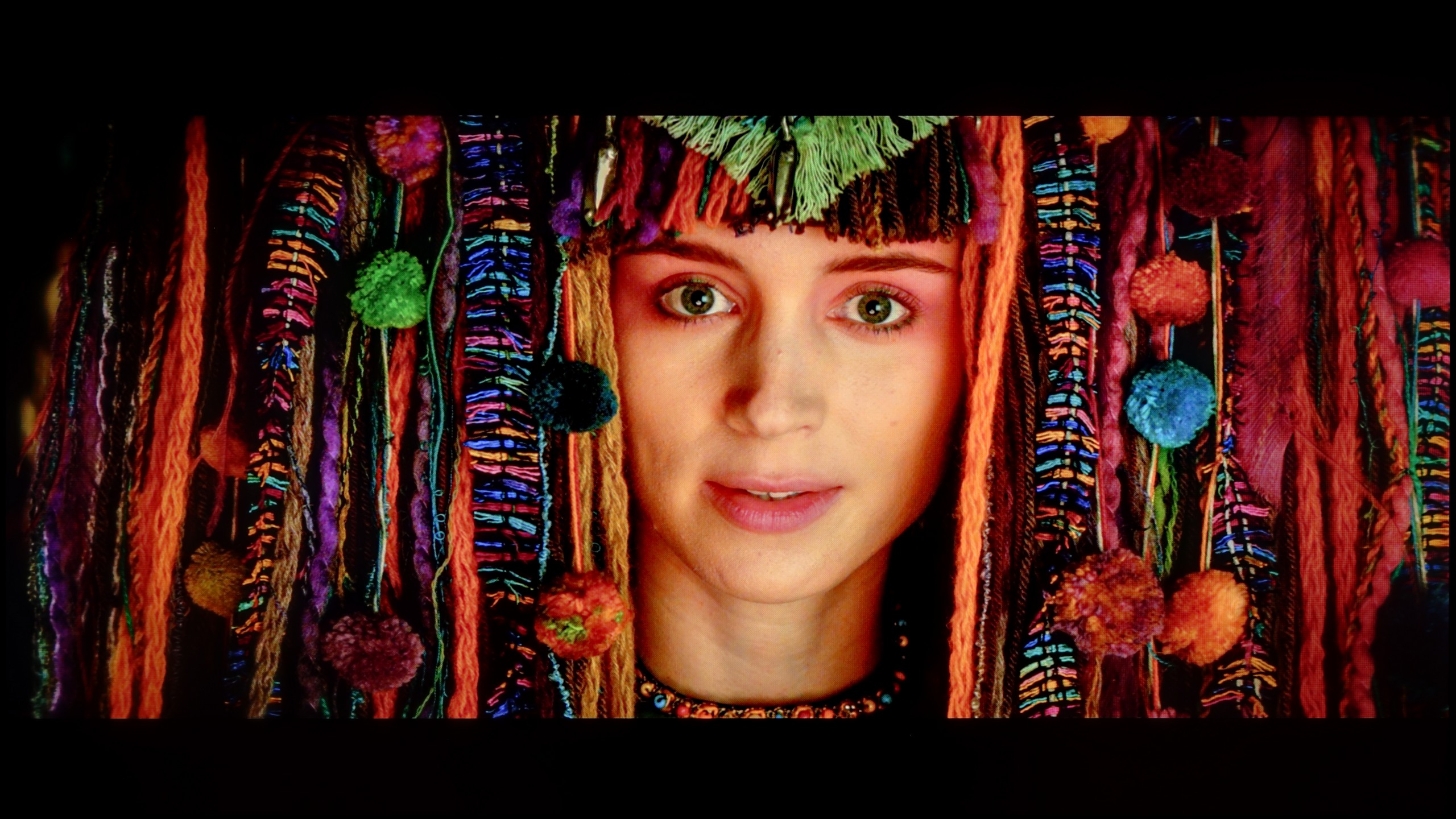
Thanks to the use of calibration tools offered by Sony X85L, it has been possible to significantly improve the image quality. After calibration, the white balance for HD content is much more stable, making colours look more natural and enhancing the authenticity of the image. Although it's not perfect, these changes allow viewers to enjoy a more realistic representation of colours, eliminating the earlier cool tone. The gamma, which already performed reasonably well, has been adjusted to an even better version. As a result, tonal transitions and brightness are more consistent, positively impacting the depth and detail of the image.
As for 4K content, despite efforts, the white balance still struggles with a lack of red, which can cause overly warm colours in some scenes. Synthetic tests showed that the EOTF curve in HDR is fairly stable, with a slight boost in mid-bright scenes. However, in actual film material, the TV can still be too bright with fine, light details, which is a result of the limitations of large local dimming technology.
Nonetheless, the calibration has brought significant benefits, particularly in terms of colour accuracy, improving overall image quality and providing a more natural and consistent directorial vision.
Thanks to specialist tools, we managed to correct the colour quality in SDR content to almost perfection. In materials with lower dynamics, delta E errors dropped below 0.5, which can be considered an almost reference result. The picture on television, YouTube, or classic Full HD looks really good after calibration. Well then – but where was it not so easy to improve the image? Primarily it concerns HDR quality content. Although we managed to somewhat "tame" the white balance and eliminate pink tints in most scenes, unfortunately, we did not have full control over brightness management. We set the local dimming settings according to the best observations – SDR: Medium, HDR: High – but the U7Q still did everything a bit its own way. There were still cases of overly strong dimming or brightening of details that calibration simply could not eliminate. And although the overall reception of content is much better, one must reckon that the U7Q will always have something to say at the end with "but".
Smoothness of tonal transitions
7.1/10
9.9/10

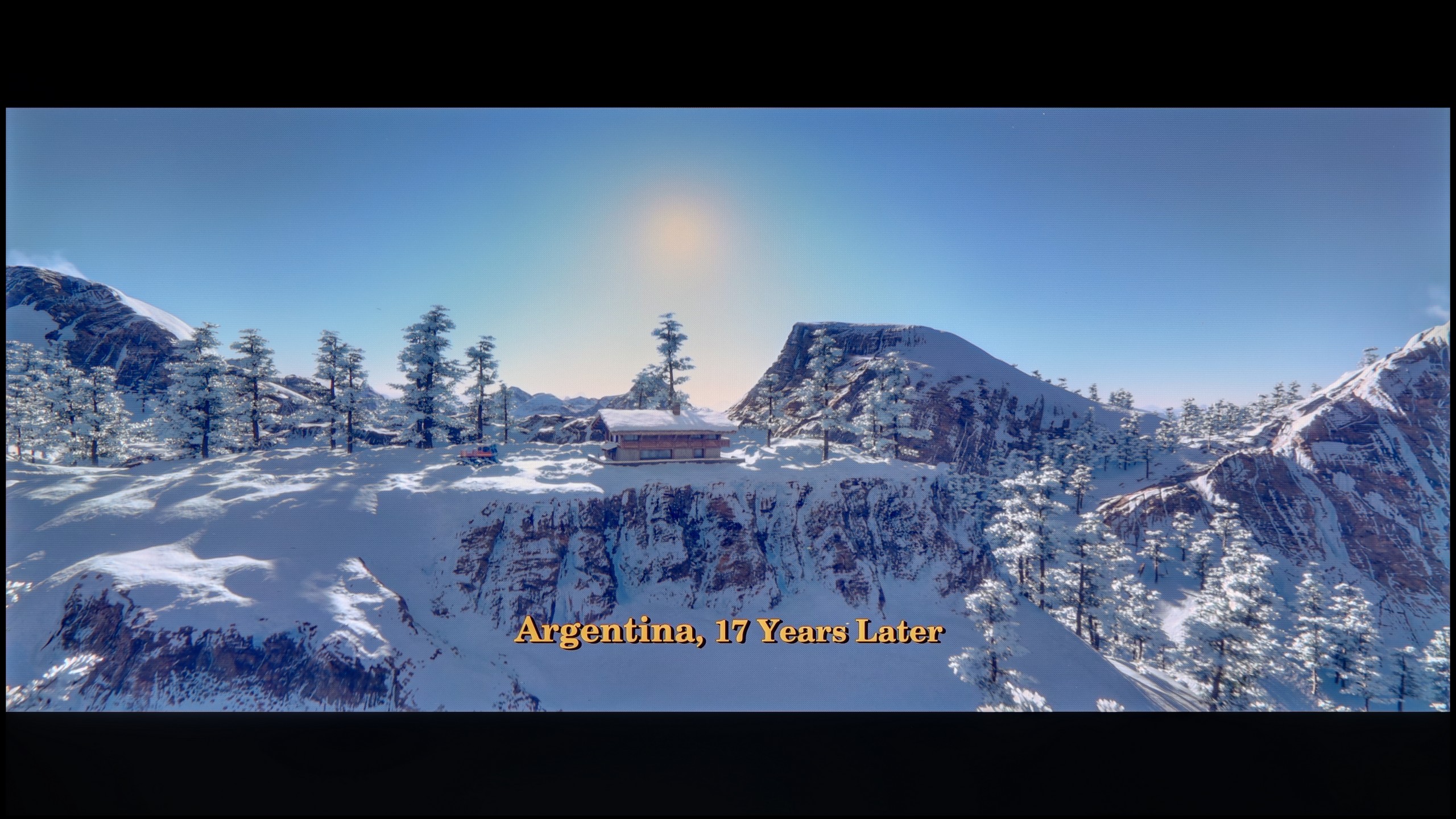

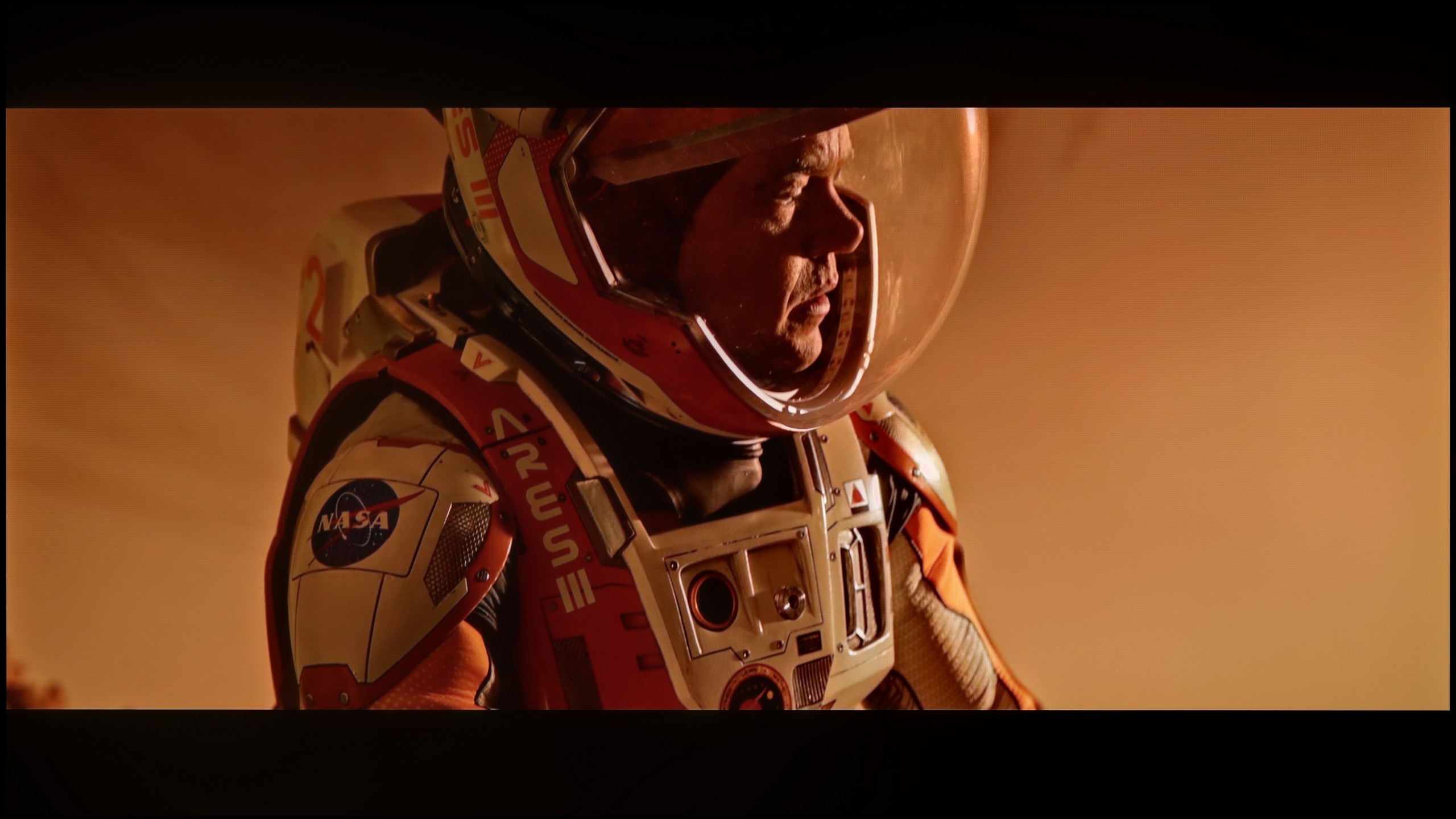

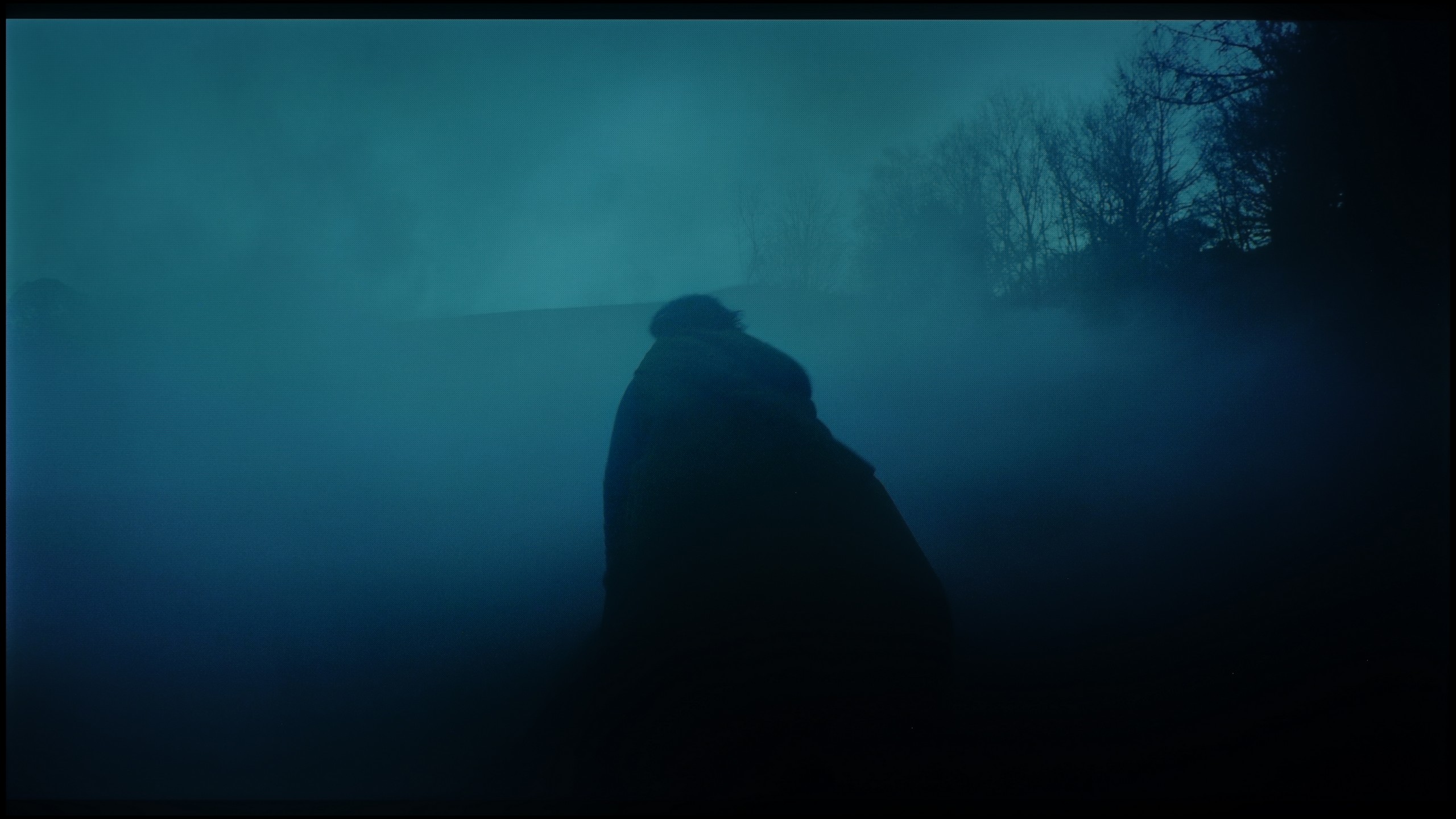






The fluidity of tonal transitions in Sony X85L is at a good level – the colour gradation is smooth, even in more demanding areas, making the perception of scenes positive and natural. The biggest issues arise in shadow areas, where subtle colour joins can be visible. Despite this, the television performs well enough that most viewers should not notice these minor imperfections.
U7Q performs exceptionally when it comes to tonal transitions – we can confidently say that it’s nearly at a reference level, which is why this television receives one of the highest possible ratings from us in this category. The colour blends are smooth, clear, without any noticeable banding. In most scenes, everything looks just perfect, and any minor imperfections may only appear in very specific shots – though we hardly noticed them during testing.
Image scaling and smoothness of tonal transitions
6/10
6/10
Smooth transition function

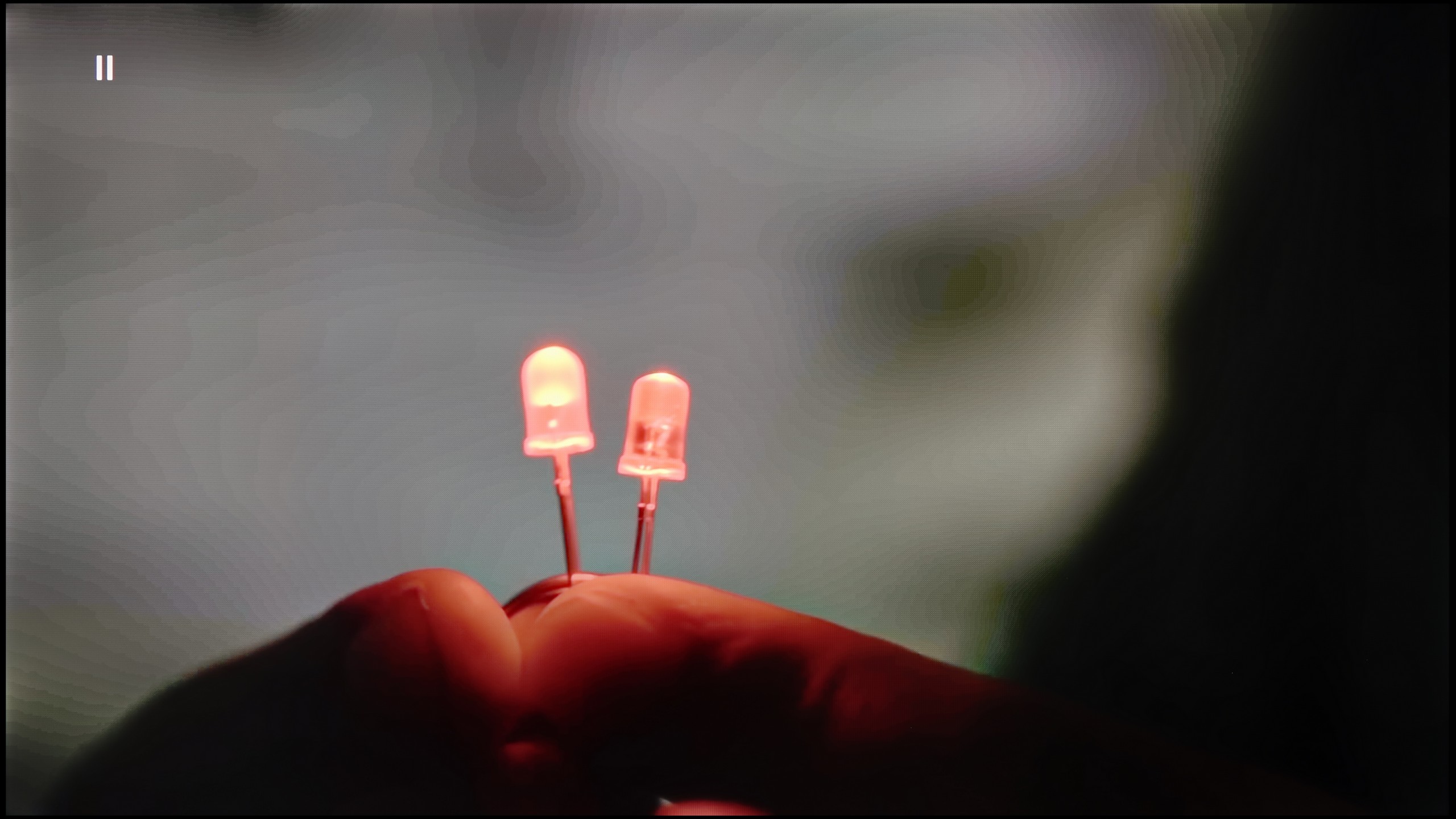
Image without overscan on the SD signal


In terms of smoothing tonal transitions, the Sony X85L television doesn’t offer any dedicated enhancement options, which is a bit of a downside. On the other hand, the image scaling performs quite well – the television adds a touch of artificial sharpness, which can make details such as tree branches more pronounced, although sometimes with visible jagged edges. This type of effect may appeal to some viewers who prefer a more detailed image.
There are situations where we would like to smooth out tonal transitions a bit, especially in older materials – those with limited source quality. The U7Q has been equipped with a feature called “Smooth and Gradient Image,” but unfortunately… it works very poorly. In the “Low” option, the effects are practically unnoticeable, and other settings smooth out the details but don’t improve tonal transitions. The only positive thing is that the feature doesn’t interfere with the film grain, so it doesn’t ruin the natural structure of the image.
Fortunately, content scaling performs quite well. The image is not overly sharpened, there is no artificial clarity – and while it’s known that this isn’t the level of high-end TVs, the U7Q has no problem displaying really old content in a completely acceptable manner.
Blur and motion smoothness
8/10
7.5/10


Blur (native resolution, maximum refresh rate):




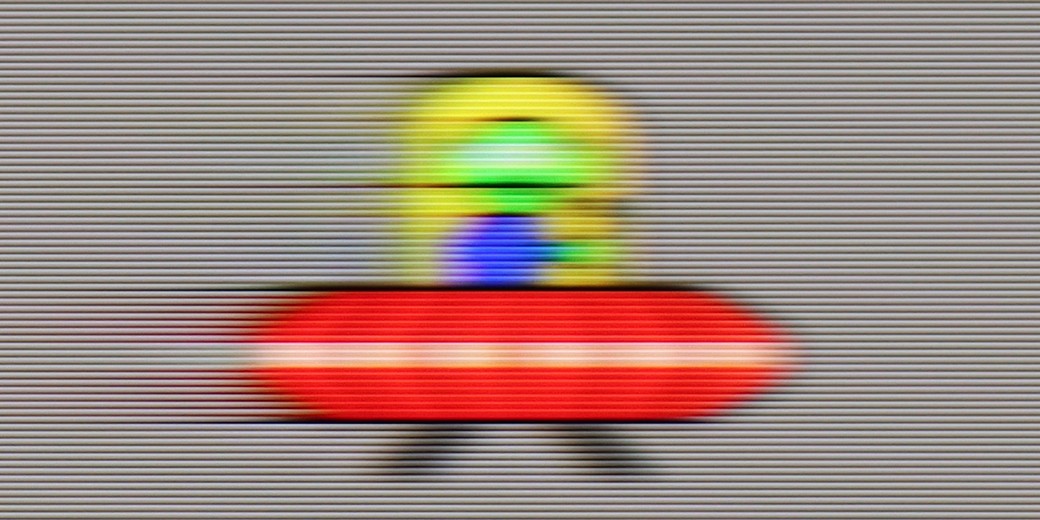
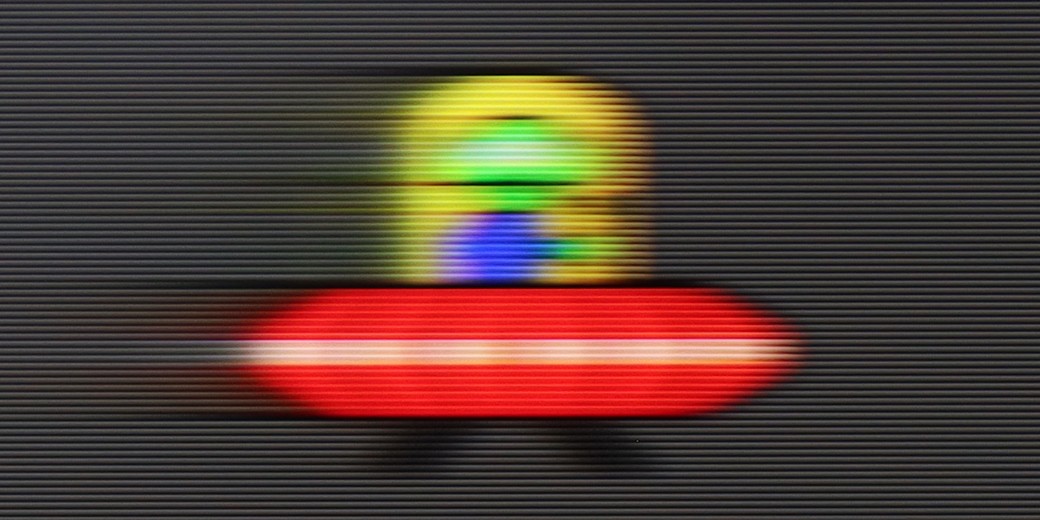
Blur (BFI function enabled):






Smużenie ():
Smużenie (1080p 240Hz):

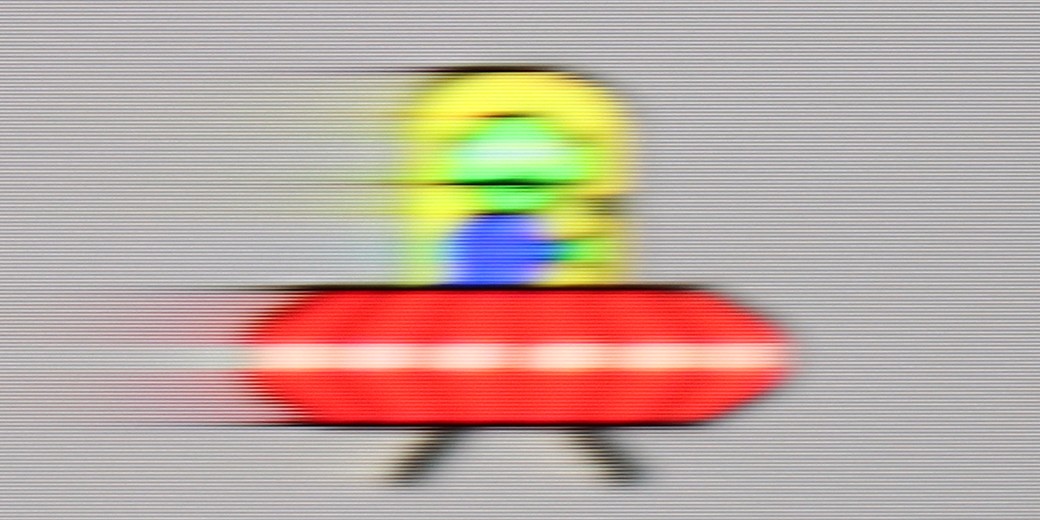
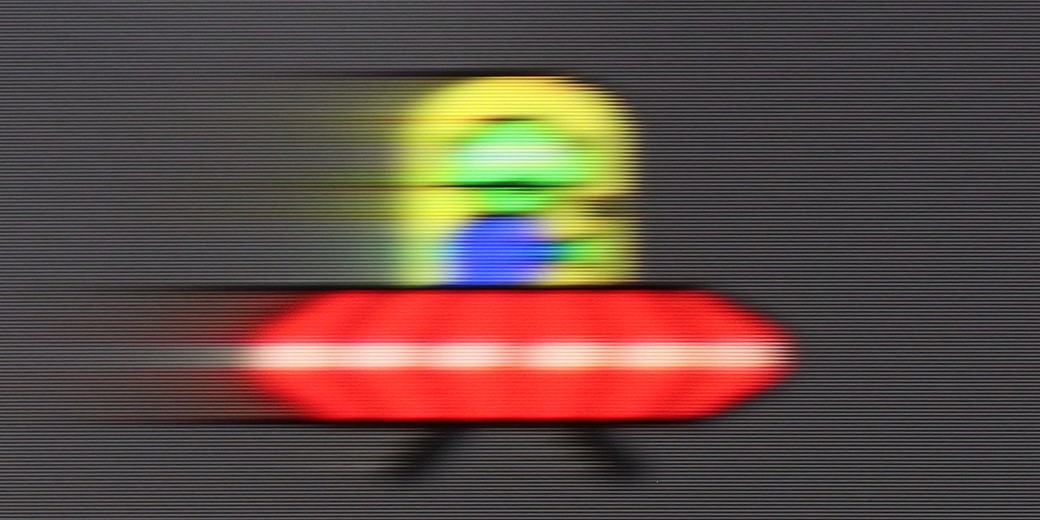
Sony X85L, equipped with a 120 Hz panel, will meet the expectations of a wide range of users – from sports and gaming fans to movie enthusiasts. Movie lovers will surely appreciate the presence of one of the best motion smoothing systems, known as Motionflow. This system offers adjustment using smoothness and clarity sliders – smoothness is responsible for fluid motion, eliminating the stuttering effect, while clarity enhances the sharpness of fast scenes, reducing blur.
U7Q is a truly fast TV, much like its more powerful version “PRO”. At 4K resolution, it supports up to 144 Hz refresh rate, and if someone wants even more – in Full HD, you can achieve up to 240 Hz! This will mainly benefit PC gamers, but it’s worth appreciating – it’s a rare feature in this price segment. Right from the start, it’s clear that the U7Q has been designed with dynamic content in mind, such as games or sports. In films, we’re not left “out in the cold” either – the U7Q offers an “Ultra Motion Smoothness” feature, where with two sliders, you can adjust whether you want a smoother, theatrical picture, or something closer to cinematic style with a visible frame. It’s good that, like most manufacturers, we have a choice here and can customise it to our own preferences.
Console compatibility and gaming features
7.8/10
8.5/10
- ALLM
- VRR
- VRR range48 - 120Hz48 - 240Hz
- Dolby Vision Game Mode
Yes, high input lag
- Correct implementation of HGIG
- 1080p@120Hz
- 1440p@120Hz
- 4K@120Hz
- Game bar



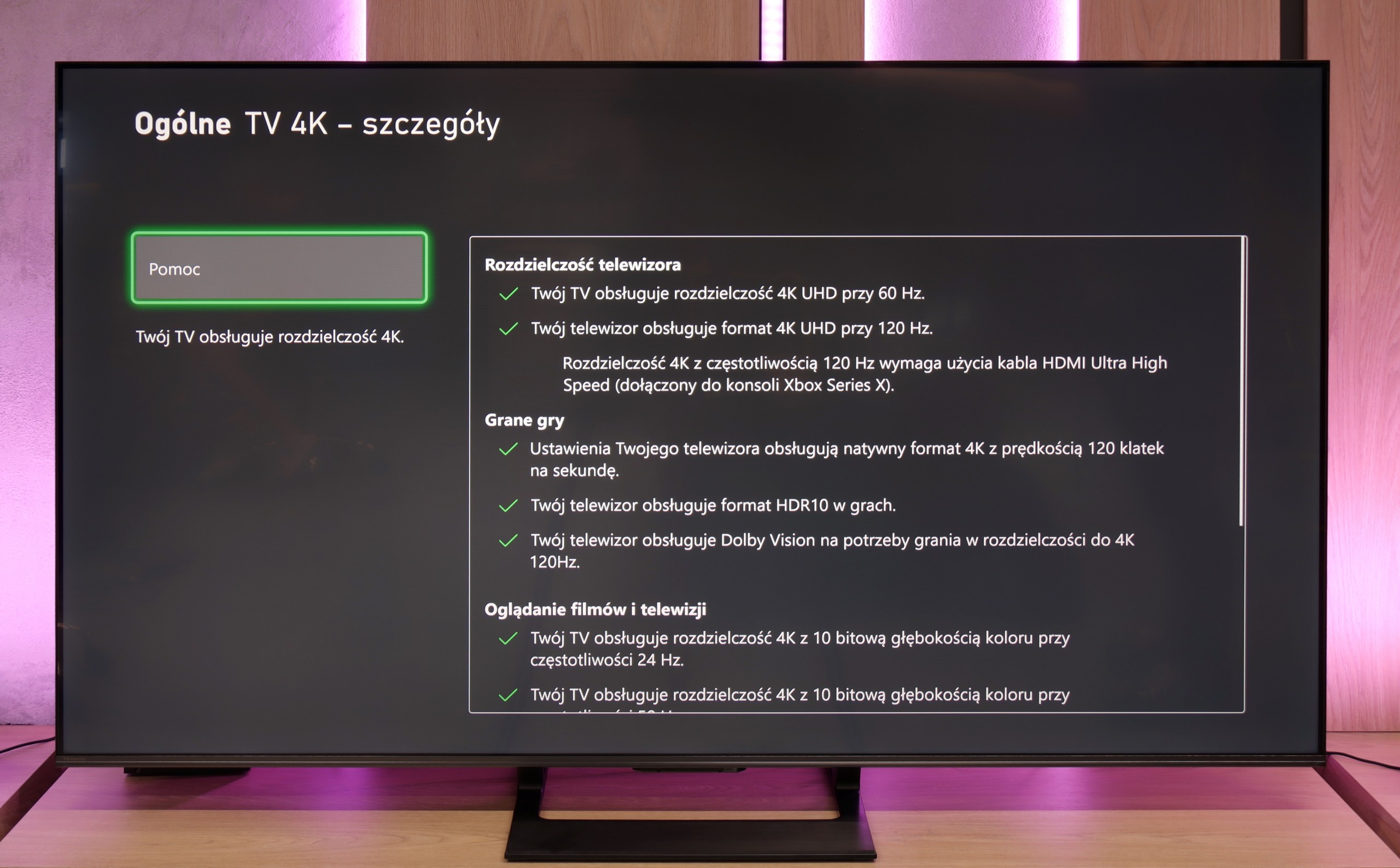



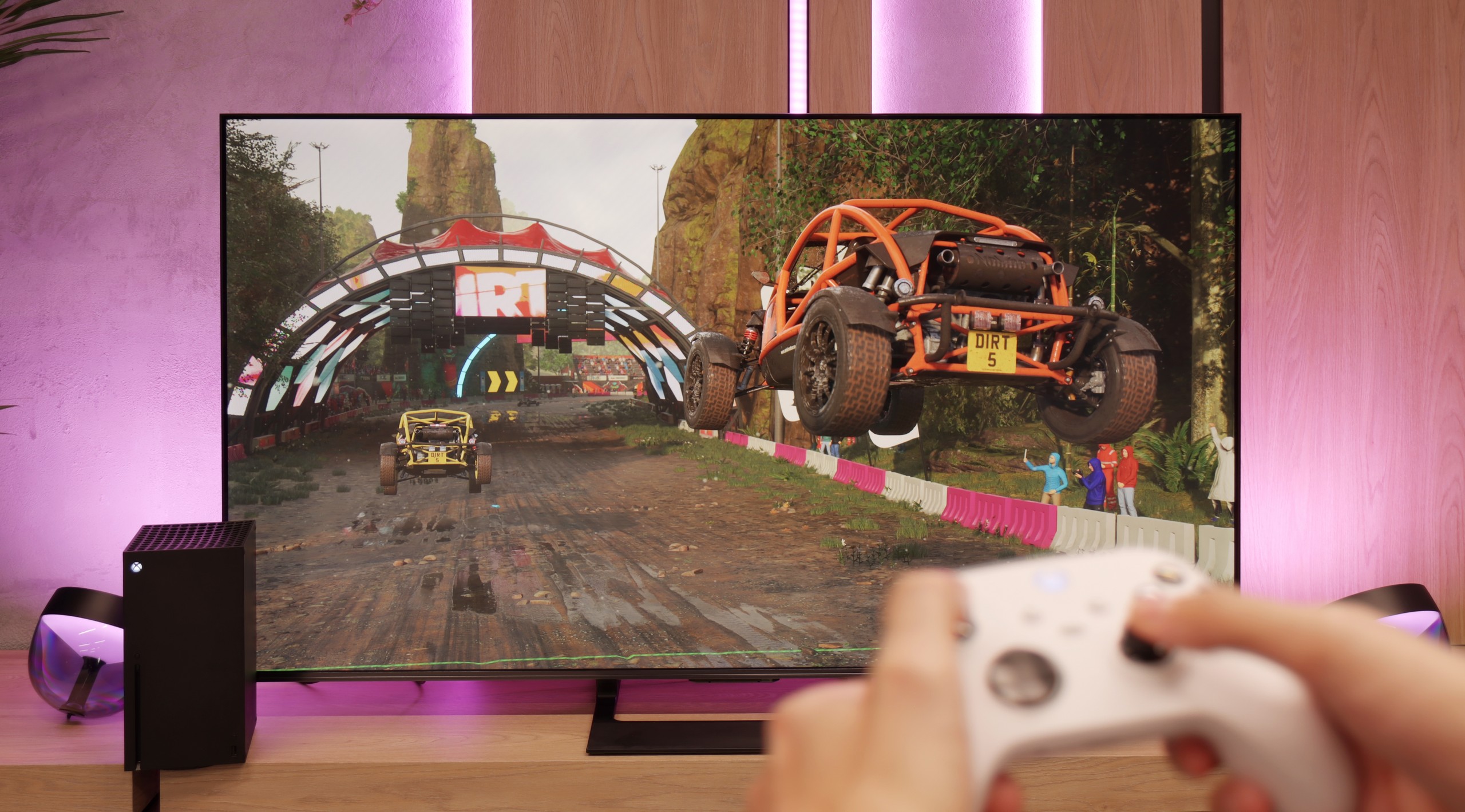
Sony X85L offers a fairly solid set of features for gamers, making it an attractive choice for gaming enthusiasts. First and foremost, the television has a 120 Hz panel, which translates to smooth and dynamic image display, ideal for both fast-paced action games and more demanding sports titles. It is equipped with two HDMI 2.1 ports with full bandwidth of 48 Gb/s, allowing for the full capabilities of next-generation consoles to be utilised. Additionally, Sony X85L supports VRR (variable refresh rate) technology, which helps reduce stuttering and artifacts during gameplay, ensuring a smooth experience. The television also supports G-Sync, which is particularly beneficial for gamers using NVIDIA graphics cards, allowing for screen refresh rate synchronization with GPU performance, eliminating screen tearing. It’s worth mentioning the Game Bar feature, which facilitates quick access to important game-related settings, such as VRR, brightness levels, or display modes, making it convenient and useful during gameplay.
However, there are some limitations. The television does not support HGiG, which may be a downside for some gamers, as HGiG optimises HDR effect rendering in games, providing a more authentic visual experience. Additionally, the Dolby Vision mode, although available, is not practical for gaming due to very high input lag.
The Hisense U7Q is a TV designed with gamers in mind – and you can see that straight away with its gaming capabilities. It has practically everything you could wish for: Variable Refresh Rate (VRR) – check, Auto Low Latency Mode (ALLM) – check, and high refresh rates of up to 240 Hz in Full HD, along with support for various resolutions, not just 4K. It’s truly an impressive set of features that makes the U7Q perform well with both fast-paced shooters on consoles and more demanding titles on PC. Of course – like most Hisense models – it lacks a proper implementation of the HGiG feature. It’s a shame because HGiG allows the console's brightness to be adjusted to the specific TV, which in practice makes it easier to display HDR games according to the creators' intentions. Without this, you just have to deal with some limitations in the final HDR image in games.
Input lag
9.1/10
9.7/10
SDR
HDR
Dolby Vision
Generally speaking, the input lag on the Sony X85L is very good, which is crucial for smooth gameplay and quick reactions in games. In standard modes, particularly when using HDMI 2.1 and playing at 4K resolution at 120 Hz, the input lag is minimal.
Unfortunately, the Dolby Vision mode is an exception to this rule. In this case, the input lag reaches as high as 95 ms. Such a high level of latency makes the Dolby Vision mode practically unplayable, as responses to commands are noticeably delayed.
The input lag on the U7Q is really impressive. With 120 Hz content, we achieved around 9 ms, and with 60 Hz – around 17 ms. These are fantastic results that make the TV great for even dynamic games requiring quick responses. It’s hard to fault anything here. Of course, as is often the case, the Dolby Vision mode in games seems a bit slower compared to standard SDR or HDR. This will be mainly noticeable for Xbox Series X/S console users, who are the only ones supporting Dolby Vision Gaming. Fortunately, the input lag still remains below 30 ms, so in practice, this is still an acceptable level even for more demanding gamers.
Compatibility with PC
5.6/10
8.6/10

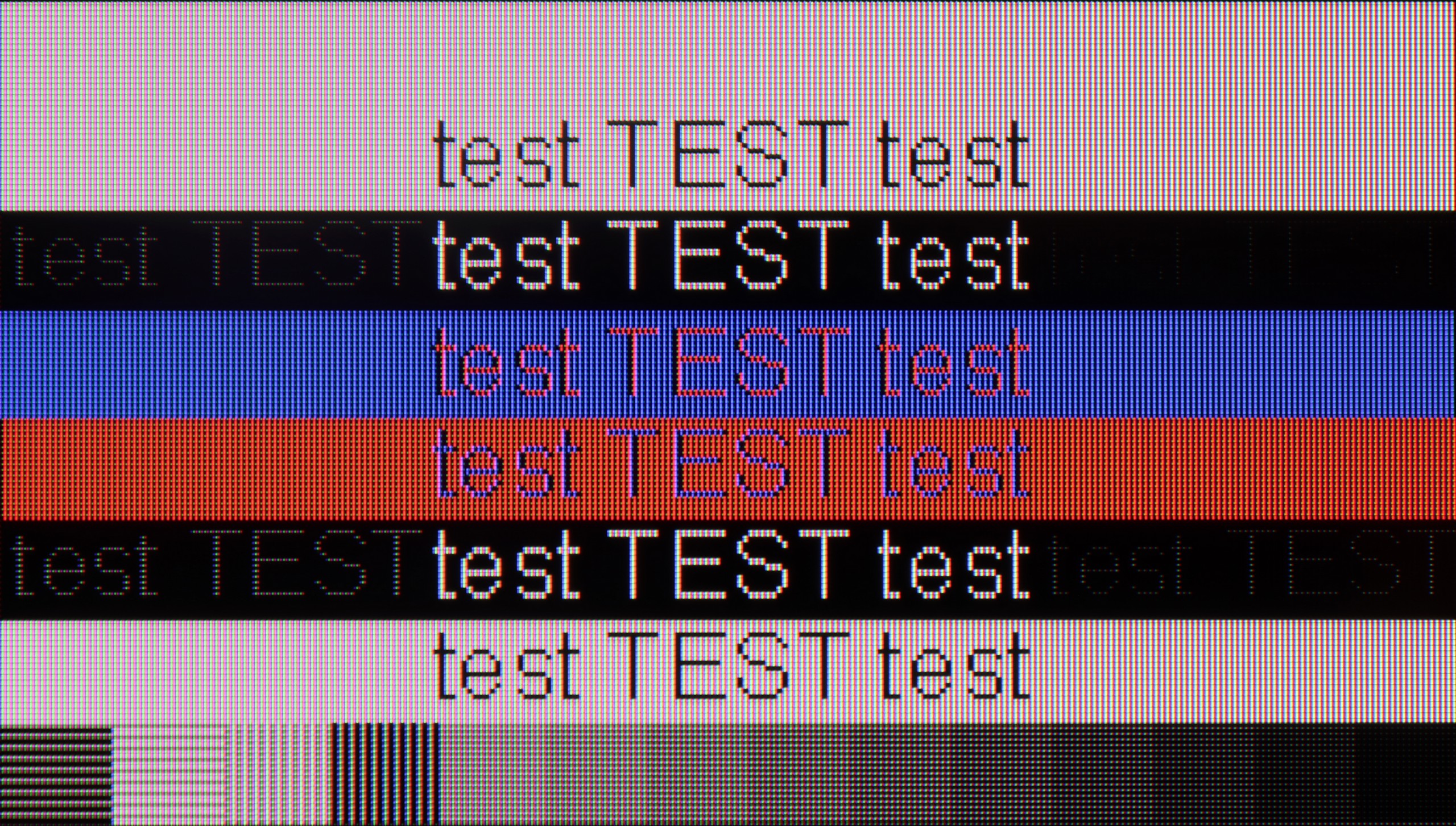
The collaboration of the television Sony X85L with a PC involves a bit of balancing between image quality and user comfort. If we want to use the TV for work, where clear fonts matter, we need to set the refresh rate to 60 Hz. In this mode, text looks good and doesn't strain the eyes, which is crucial if we plan to spend a longer time in front of the screen.
On the other hand, if the TV is intended for gaming, where we can take full advantage of its capabilities at 120 Hz, we must consider that the readability of the fonts noticeably decreases. The image becomes less sharp and the text harder to read, which can be frustrating. In short – Sony X85L works well for occasional connection to the computer, but if we need it daily for work and gaming, this compromise may not appeal to everyone.
The U7Q communicates great with the computer. For gamers, this is fantastic news – we have high refresh rates, low input lag, and G-SYNC support, making gaming from a PC an absolute pleasure. But the U7Q also performs well in everyday tasks. If someone uses a computer for text, web browsing, or office work – there’s nothing to nitpick about. The TV correctly handles chroma 4:4:4, so fonts look sharp and clear, without blurring or strange outlines. Both small and capital letters are simply legible – just as they should be.
Viewing angles
3/10
3/10
Viewing angles on the Sony X85L, as is often the case with VA panels, are not the best. The picture looks great when you’re watching the TV head-on, but all it takes is a slight shift to the side to notice that the colours lose their vibrancy and the contrast noticeably weakens. This could be a problem if the TV is meant for watching in larger groups, where viewers are seated at different angles. For those who typically watch solo or from one central spot, it won't be a major downside, but the picture quality unfortunately drops when watching from the side.
The viewing angles on the U7Q are rather weak – that's just typical for VA panel characteristics. Directly in front, everything looks very good: blacks are deep, colours are saturated, and the contrast is high. But just moving slightly to the side is enough for the picture to start losing quality – colours become paler, and blacks begin to resemble dark grey. Compared to TVs with IPS panels, the U7Q performs worse, although on the other hand, it compensates with better contrast and deeper blacks.
TV efficiency during daytime
6.5/10
6.2/10

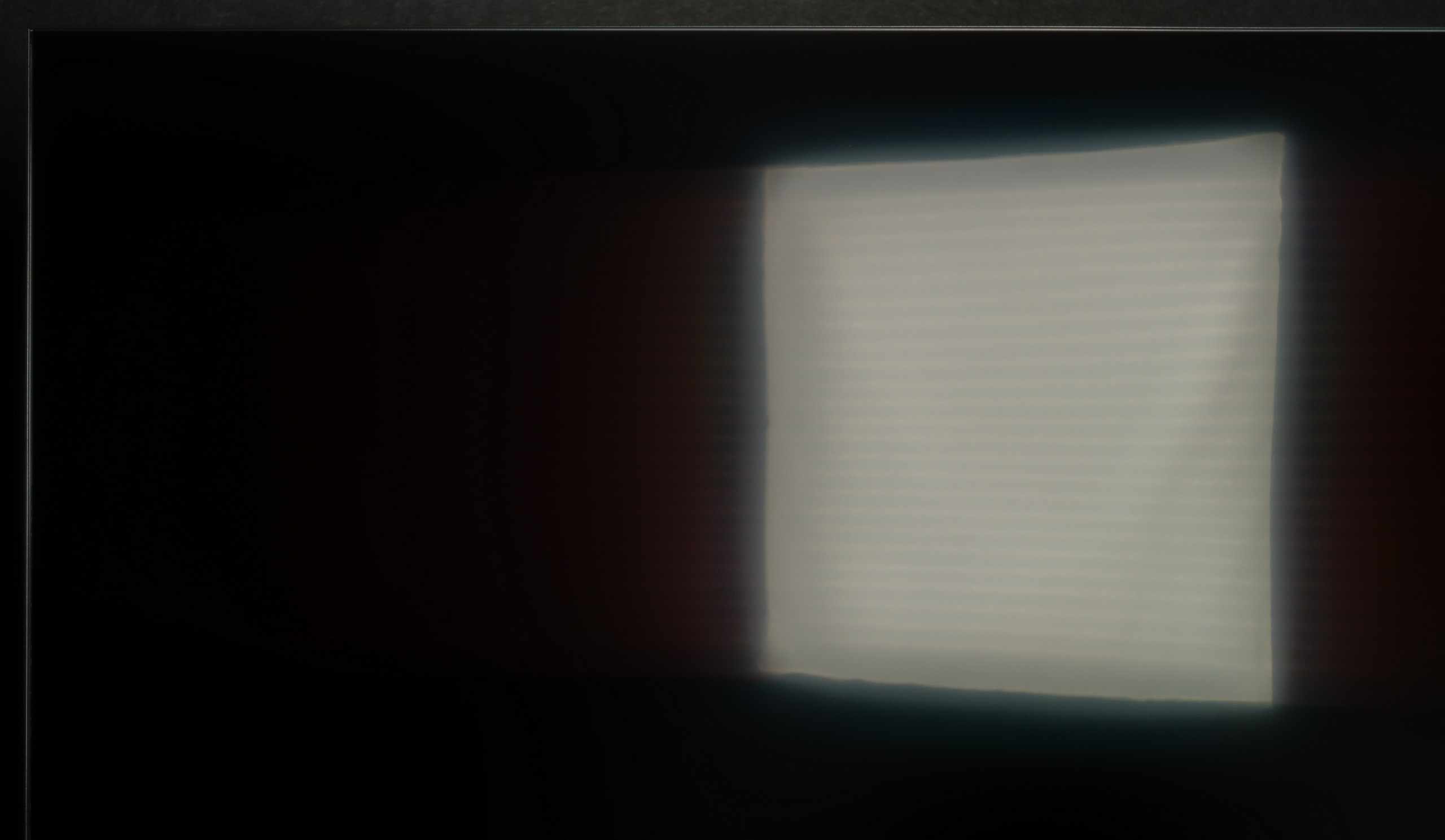

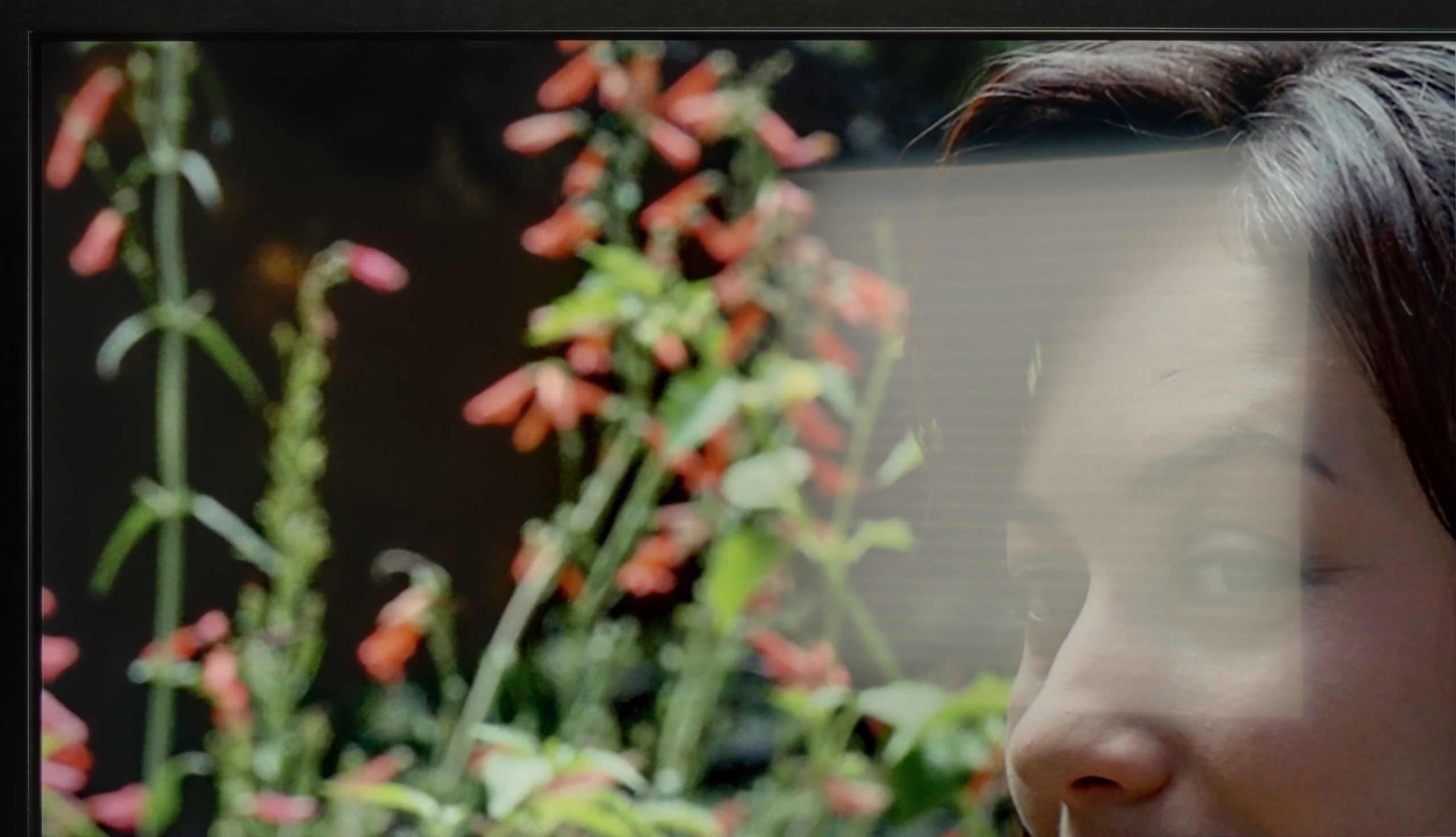
Matrix brightness
Average luminance SDR
Hisense U7Q: 519 cd/m2
Sony X85L: 571 cd/m2
The performance of the television Sony X85L during the day is quite decent. Its satin screen coating handles light reflection moderately well, which means that in bright rooms there may be some glare, but it is not bothersome enough to significantly interfere. The brightness in SDR mode at 570 nits is sufficient for comfortably watching TV during the day, even with natural light coming in through the windows. This ensures that colours remain vibrant and the picture is clearly visible, making the television suitable for everyday use.
The U7Q performs quite well in sunny rooms. Brightness in SDR mode averages around 520 nits, which practically means that even on a sunny day, you can comfortably watch television without the feeling that everything is drowning in reflections. Additionally, thanks to the satin coating on the panel, the television handles reflections well.
Details about the matrix
Subpixel Structure:

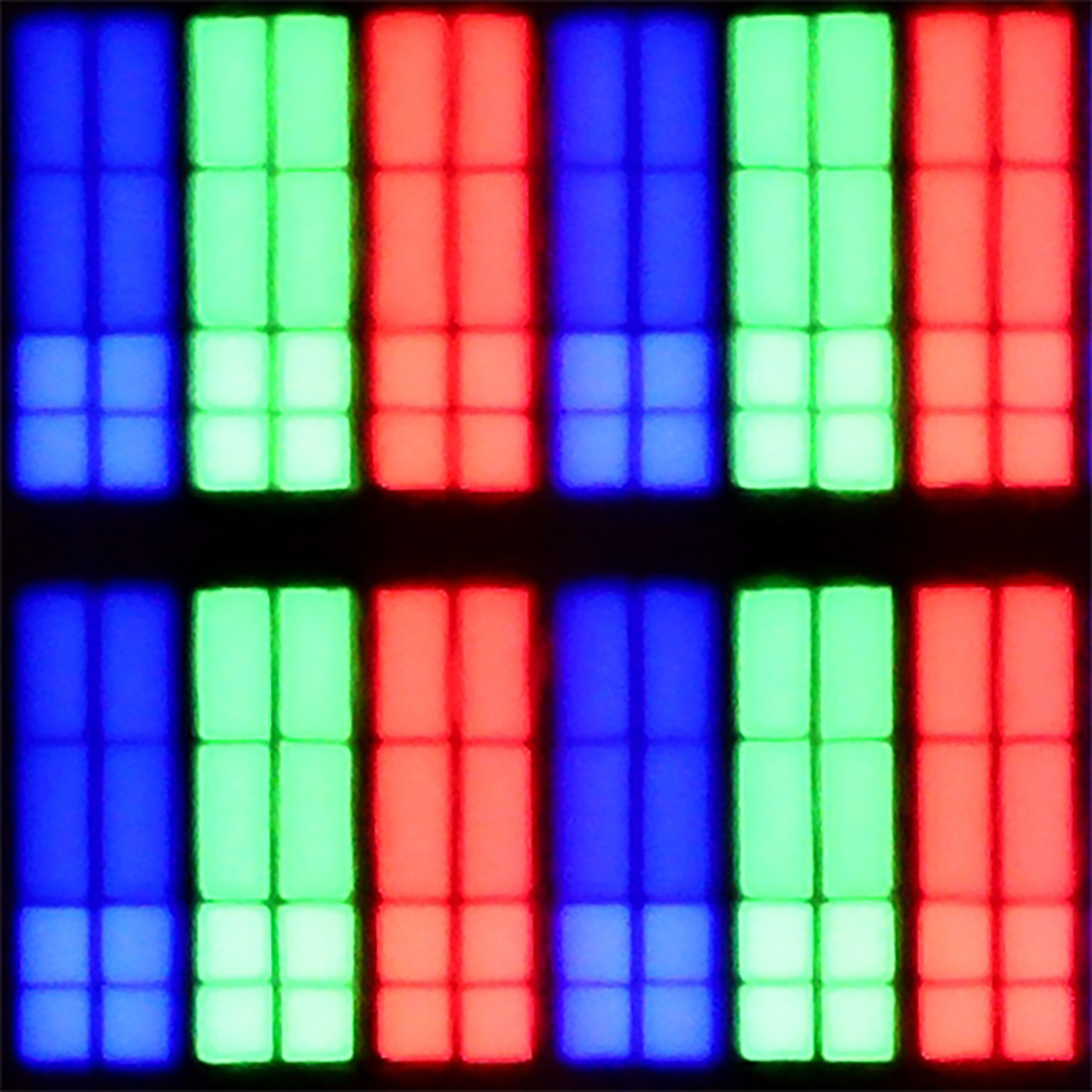
Panel uniformity:

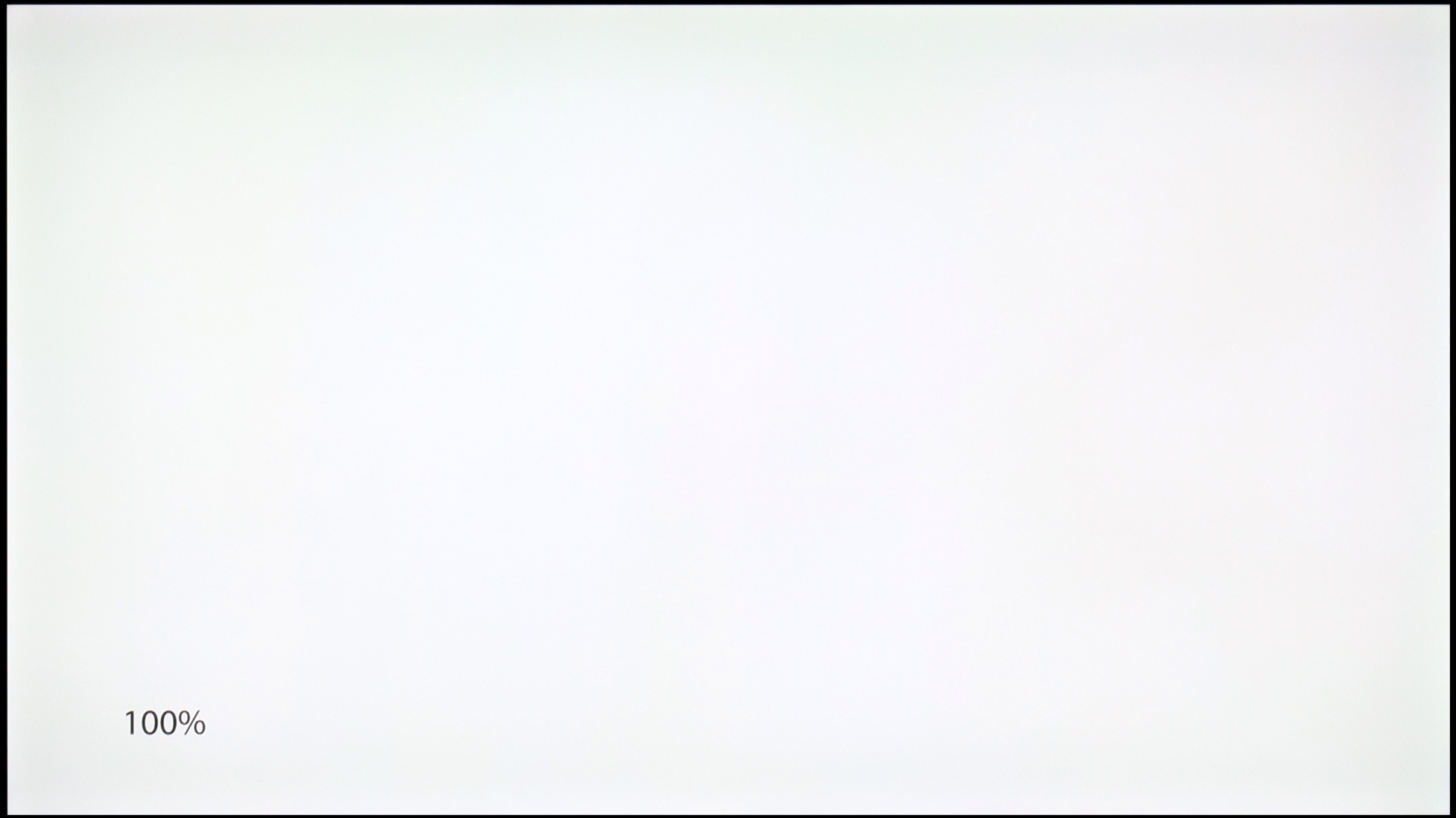
TV features
8.3/10
8.9/10
- HDMI inputs2 x HDMI 2.0, 2 x HDMI 2.1 48Gbps2 x HDMI 2.0, 2 x HDMI 2.1 48Gbps
- Other inputsRCA (Chinch)RCA (Chinch)
- OutputsToslink (Optical audio), eARC (HDMI), ARC (HDMI)Toslink (Optical audio), eARC (HDMI), ARC (HDMI), Mini-Jack (Headphones)
- Network InterfacesWi-Fi 2.4GHz, Wi-Fi 5GHz, Ethernet (LAN) 100MbpsWi-Fi 2.4GHz, Wi-Fi 5GHz, Ethernet (LAN) 100Mbps
- TV receptionDVB-T, DVB-T2, DVB-S, DVB-S2, DVB-CDVB-T, DVB-T2, DVB-S, DVB-S2
Classic features:
- Recording to USB (terrestrial TV)
- Recording programming
- Picture in Picture (PiP)
- RF remote control (no need to aim at the screen)
- Backlit remote control
- Teletext
- Audio only mode
- Possibility to connect Bluetooth headphones to the TV
- Possibility to simultaneously use Bluetooth headphones and the TV speaker
Smart features:
- AirPlay
- Screen mirroring (Windows Miracast)
- Wyszukiwanie głosowe
- Voice search in native language
- Ability to connect a keyboard and mouse


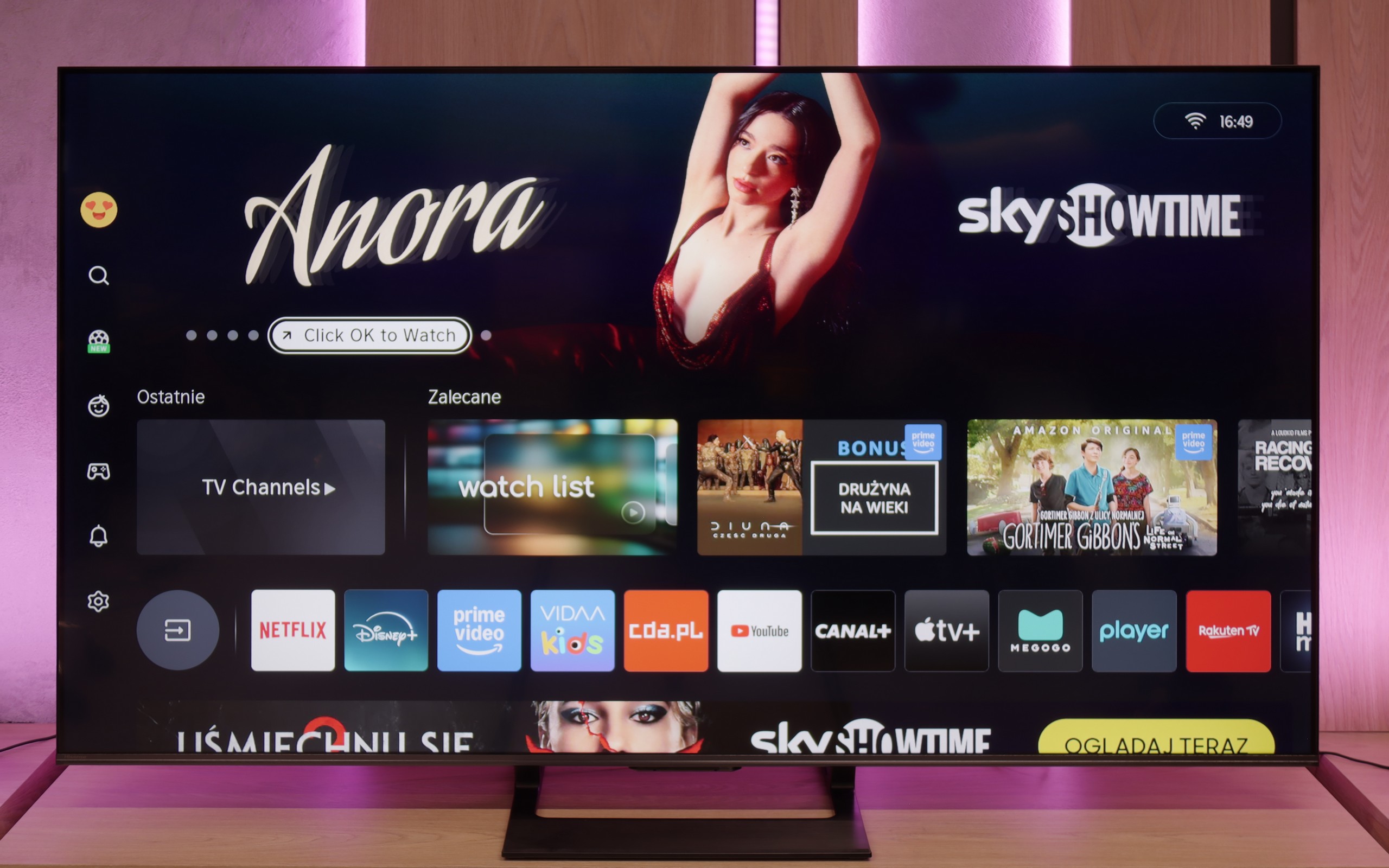

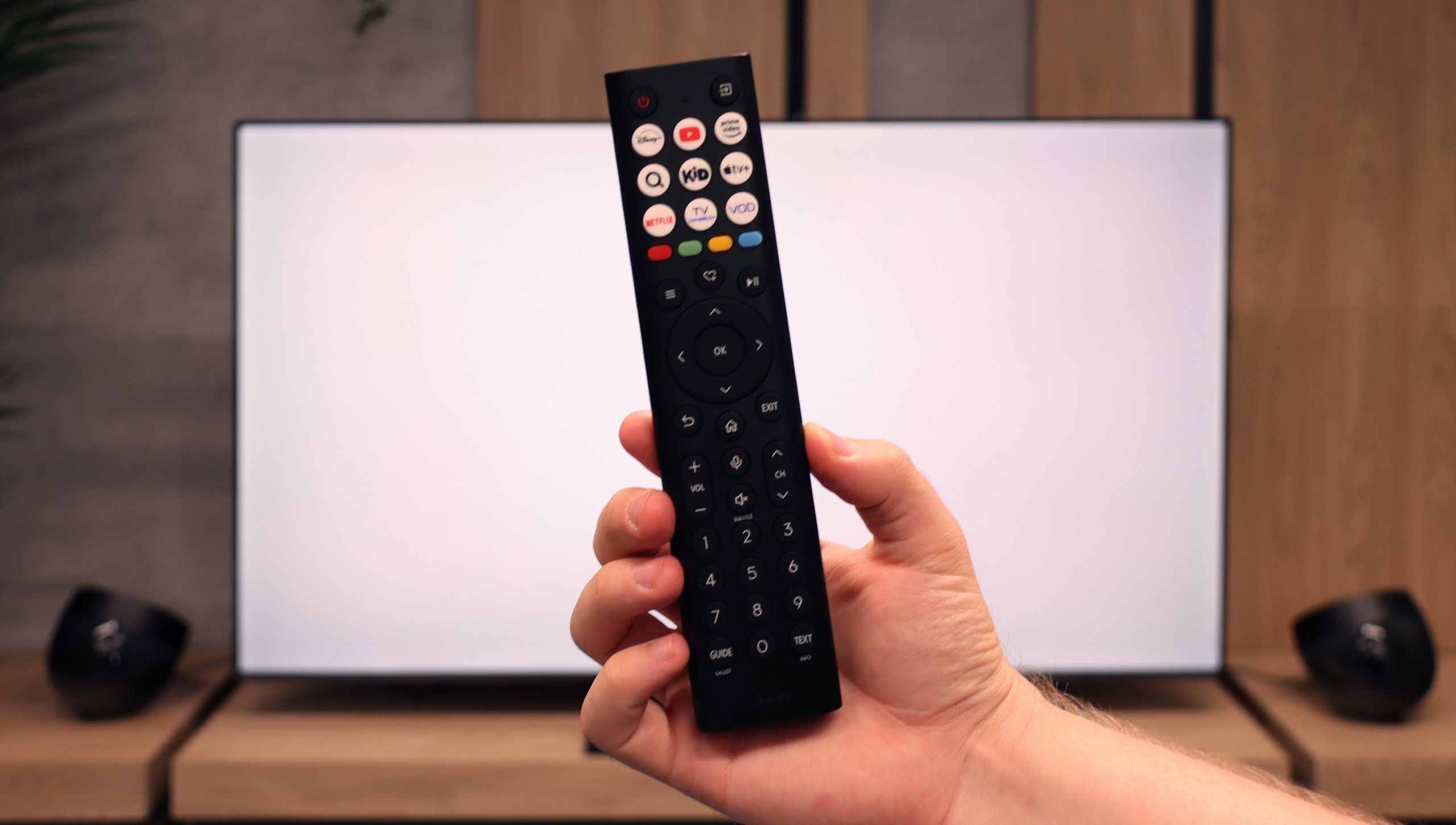
Sony X85L operates on the Google TV system, which is a significant advantage for many users. The television offers wide access to apps, and using streaming platforms is smooth and user-friendly. The interface is intuitive and easy to master, allowing for quick switching between apps and searching for favourite content. Google TV allows for personalization of the home screen, enabling each user to tailor it to their preferences. Google Assistant further enriches the experience by offering voice control and quick changes to settings or searching for films without using the remote.
In terms of user features, Sony X85L offers many useful options. The television has the capability to record programs, which is a great convenience for those wanting to watch their favourite content at any time. AirPlay support allows seamless streaming of content from Apple devices, which iPhone and iPad owners will appreciate. In addition, with built-in Bluetooth, various devices such as headphones or keyboards can be connected. However, one drawback is the absence of the PiP (picture in picture) function, which may disappoint users who prefer multitasking on the screen.
The design of the Sony X85L TV, while perhaps not the slimmest, is sturdy and elegant. The metal base with adjustable legs is one of its strong points, allowing for the height and width of the television to be adjusted to fit various furniture and spaces. This practical solution enhances the interior and adds a modern character to it.
Classic features of U7Q
Hisense U7Q really has a lot to offer when it comes to classic TV features. You can record shows onto USB, easily connect external devices via Bluetooth, and the interface – such as the EPG – is clear and readable. It may sound like something that mainly seniors would appreciate, but the truth is that U7Q has practically everything needed for watching classic television. The only thing missing here is the PiP (picture-in-picture) feature.
Smart TV U7Q: Vidaa
When it comes to smart features, U7Q runs on the proprietary VIDAA system. And I must say – it runs really smoothly. Voice search in Polish? No issues at all. AirPlay and screen mirroring? They also work without a hitch. Of course, one must be aware that VIDAA is a closed system, so – as is often the case – it lacks a few popular apps, especially those related to music. Therefore, it’s worth checking before purchasing to see if all the apps you use daily are available.
Playing files from USB
8.7/10
8.2/10
Supported photo formats:
Maximum photo resolution:


Sony X85L handles playback of most popular file formats from USB without any issues, which is a big plus for those who often access external content. However, it's worth mentioning a minor drawback – the built-in player does not allow for changing the font colour in subtitles, which may be troublesome for some. Fortunately, thanks to the extensive Google TV system, users have a wide range of options. Alternative media players can be easily installed, offering more personalisation options.
The built-in player in the U7Q completely meets the needs of most future users. The television effortlessly supports Polish characters and most popular video, audio, and photo formats. If we had to nitpick, it would only be the limited support for certain photo resolutions – there are times when files from the camera are not displayed correctly. So it’s worth keeping this in mind if you plan to show photos straight from a DSLR or phone.
Apps
9.6/10
7.7/10














































Sound
6.9/10
7.2/10
- Subjective sound quality:6.9/107.2/10
- Dolby Digital Plus 7.1:
- Dolby True HD 7.1:
- Dolby Atmos in Dolby Digital Plus (JOC):
- Dolby Atmos in Dolby True HD:
- DTS:X in DTS-HD MA:
- DTS-HD Master Audio:
The sound on the Sony X85L is good – it's clear across the entire scale, allowing enjoyment of both dialogue and music. The bass, though light, is noticeable and adds some depth to the overall sound. However, it should be emphasised that this is a subjective assessment – some may be satisfied with this sound profile, while others might require additional audio equipment to fully experience the stronger tones and a more spacious sound.
Sound is one of the biggest advantages of the U7Q. The TV plays really nicely – there's a slight discernible bass, good tonal balance, and it's definitely more than just for "casual news watching." You can easily play music on it and just sit back and enjoy the sound – of course, in an entertainment sense, not an audiophile one 😉. A big plus is also the full support for the most important audio codecs, which worked flawlessly. The only exception is Dolby Atmos in TrueHD format, which didn’t fully work when connected to the home theatre, so if someone uses that format – it's worth keeping in mind - perhaps it's a software glitch.


